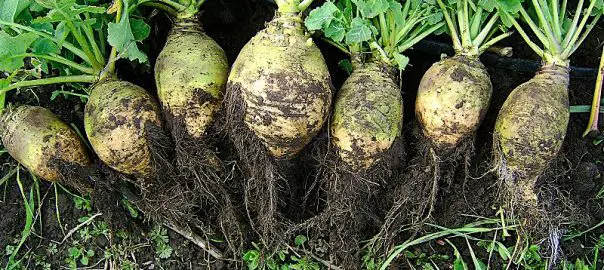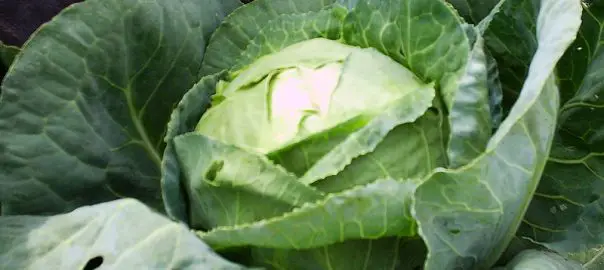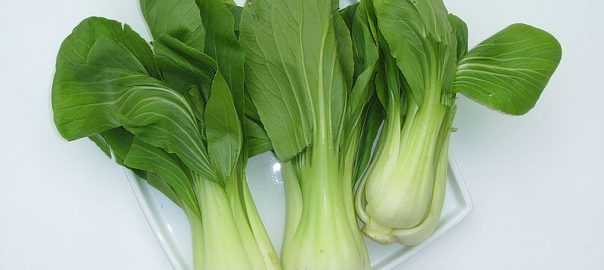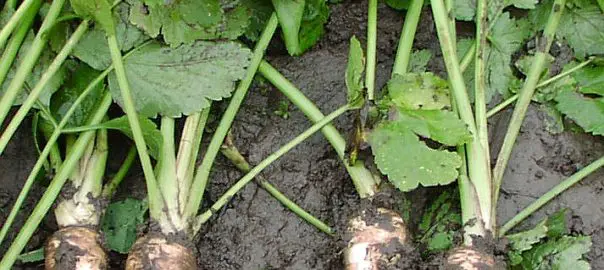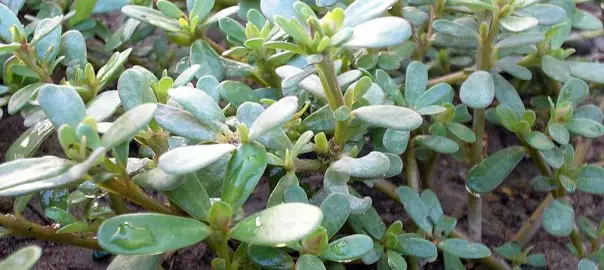Swede is a root vegetable that originated as a cross between the cabbage and the turnip.
The roots are prepared for human consumption in a variety of ways, and the leaves can be eaten as a leaf vegetable.
The roots and tops are also used as winter feed for livestock, when they may be fed directly, or by allowing the animals to forage the plants in the field.
Various European countries have a tradition of carving them into lanterns at Halloween. (source)
Can guinea pigs eat swede?
let’s take a look at its nutritional data and find out more.
In particular, its acidic, water, sugar, fat, salt, calcium, and phosphorus content is of most interest as far as guinea pigs are concerned.
Nutritional value per 100 g (3.5 oz)
Energy 157 kJ (38 kcal)
Carbohydrates
8.62 g
Sugars 4.46 g
Dietary fiber 2.3 g
Fat
0.16 g
Protein
1.08 g
Vitamins
Thiamine (B1) (8%) 0.09 mg
Riboflavin (B2) (3%) 0.04 mg
Niacin (B3) (5%) 0.7 mg
Pantothenic acid (B5) (3%) 0.16 mg
Vitamin B6 (8%) 0.1 mg
Folate (B9) (5%) 21 μg
Vitamin C (30%) 25 mg
Minerals
Calcium (4%) 43 mg
Iron (3%) 0.44 mg
Magnesium (6%) 20 mg
Manganese (6%) 0.131 mg
Phosphorus (8%) 53 mg
Potassium (6%) 305 mg
Zinc (3%) 0.24 mg
source wikipedia
As you can see swede contains a large amount of phosphorus, acidic content, a little calcium and sugar and a hint of fat.
This means that they can eat it in small amounts, however they can’t eat too much of it due to its acidic and phosphorus content that it has.
Eating too much of it will cause a guinea pig problems because of its acidity and so they are better off just having a few small pieces at a time, in fact two or three at the most.
Cut it up into manageable pieces that they can eat easily.
Also make sure it is washed thoroughly before you feed it to them.
As with most veggies, some piggies will enjoy swede and some won’t so it is defiantely worth a try with them, but don’t be alarmed if they don’t like it.
It is a veggie that will go nicely as part of a balanced diet for your piggies.
Give them water, hay, guinea pig mix and some pieces of fruit along with these veggies and will enjoy having a diet that will benefit them from a nutritional point of view and be varied and flavorsome for a piggie.
Can guinea pigs eat cooked swede?
No they can’t unfortunately. Cooked food is not good for guinea pigs to eat and they are much better with raw food. This includes if the swede is fried, stewed, baked, boiled, or sauteed.
For more foods that guinea pigs can and can’t eat, check out our guinea pig food list.
